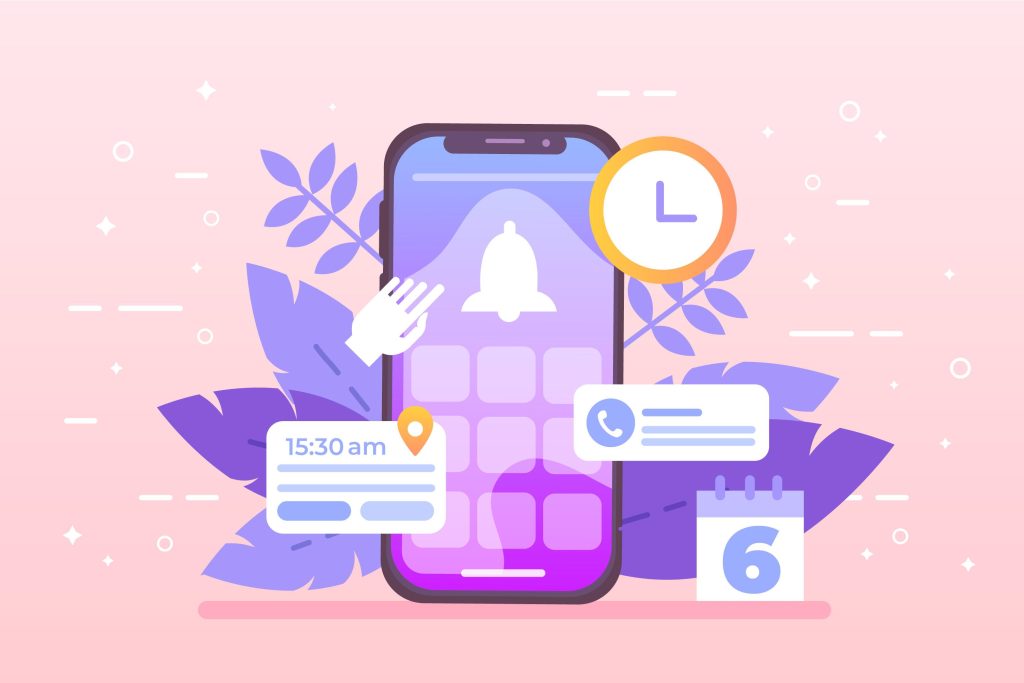Low-noise notifications are gaining traction in 2025—and for good reason. As our digital lives intensify, the constant barrage of pings, buzzes, and badges is not just annoying—it disrupts focus, drains cognitive resources, and contributes to burnout. But there’s a smarter, quieter alternative: notifications designed to be gentle, respectful, and context-aware.
In this article, we’ll explore the logic behind low-noise notifications, including emerging technologies, behavioral insights, and best practices. We’ll also offer a practical guide on how to implement them—so you can reclaim your attention without missing important alerts.

What Are Low-Noise Notifications?
Low-noise notifications prioritize timing, modality, and relevance. Instead of interrupting with a loud ping during deep work, they deliver alerts via subtle cues—like soft vibrations, visual badges, or deferred delivery—when you’re receptive. They’re designed with calm technology principles in mind: supporting attention without dominating it .
Today’s mobile and desktop ecosystems are catching up, offering features like Focus Assist on Windows, Focus modes on iPhone, and Sleep/Quiet Modes on Instagram—all enabling users to silence or delay notifications during key activities.
Why We Need Them: The Cognitive Cost of Every Ping
1. Interruptions Cost More Than You Think
If you’re hoping a quick glance won’t derail your workflow, think again. Research shows even knowing a notification arrived—before you’ve opened it—can fragment your attention. A single ping requires roughly 60–90 seconds to regain full focus.
2. Noise = Stress + Fatigue
Constant interruptions don’t just disrupt—they tire. A study of Amazon Kindle users found excessive notifications increased mental fatigue, inattention, and stress—even among those not clinically diagnosed with ADHD.
3. Silent Isn’t Enough
Switching to silent or vibration mode isn’t a cure-all. Users still check phones obsessively in those modes—and these subtler alerts continue to fragment attention.
Emerging Trends in Low-Noise Notifications
1. Bounded Deferral: Wait for the Right Time
Software now segments notifications according to urgency, delivering them only during natural breaks or low-intensity moments—known as bounded deferral. One pilot project used this strategy to improve user flow and productivity.
2. Context & Mood-Aware Alerts
Advanced systems—like the Temporal Interaction Model—analyze patterns in user behavior to predict optimal notification times, reducing disruption while keeping engagement high.
3. Multimodal Gentle Cues
Rather than a full-screen banner, some notifications are shifting toward low-level cues: gentle vibrations combined with visual badges, for example. Studies in lab settings suggest such nuanced, synesthetic signals may be more effective in low-noise environments .
4. Calm Tech Design Certification
“Calm Technology” is becoming a certification frontier. The newly launched Calm Tech Institute is setting standards to ensure products inform without intruding—a key philosophy behind low-noise notifications.
Implementing Low-Noise Notifications: A Practical Guide
Use this three-step framework to optimize notification setup across devices and platforms:
1: Audit & Prioritize Your Alerts
- List all your notification sources: apps, services, devices.
- Classify by urgency:
- Critical: e.g. health alerts, calendar reminders.
- Useful but non-urgent: e.g. social media, news updates.
- Disposable: promotional emails, game invites.
- Goal: Only let truly critical notifications bypass your low-noise settings.
2: Set Quiet Contexts
- Use Focus Assist (Windows), Focus modes (iOS/Android), or Quiet mode (Instagram) during scheduled deep-work times.
- Choose to allow exceptions, such as alerts from family, work messages, or system-level reminders.
- Automatically activate modes based on calendar events, location, or time of day.
3: Adopt Low-Noise Modalities
- Visual-first cues: a small badge or subtle screen flash instead of loud alerts.
- Gentle vibrations: brief and soft enough to minimally disrupt concentration.
- Deferred notifications: batch alerts to appear during pre-set break intervals.
- Multimodal cues: combine vibration + visual badge for clarity without noise.
4: Monitor & Adjust
Track how many distractions occur and how you feel. Use screen-time tools or manual logs to refine:
- Are you still interrupting deep focus?
- Do urgent messages reach you promptly?
- Experiment with easing restrictions or tightening them based on lifestyle.
Case Study: Open-Office ‘Quiet Computing’ Meets Digital Silence
Modern offices embracing quiet computing are combining physical acoustics with digital calm. Workers enjoy private pods, sound dampening, and no-badge alerts. And for remote or hybrid teams, synchronized focus blocks (via Outlook, Teams, or Slack) push non-essential messages until appropriate break-times .
The outcome? Studies show up to a 15% improvement in deep-task performance and higher employee satisfaction in low-noise zones.
The Logic Behind Low-Noise Notifications (Key Points)
- Minimize Cognitive Load
Every interruption forces your brain to restart—wasting time, energy, and attention. - Emotional Recovery
Silent modes alone don’t stop the mental tug of expecting a ping—low-noise design removes that tug. - Cultivate Calm Awareness
Notifications in your periphery—like calm-tech advocates promote—support awareness without capturing attention. - Context Sensitivity
Smart timing—whether through mood or contextual models—reduces hazard of ill-timed alerts.
Going Forward: What’s Next?
- Smart environments may soon auto-adjust notification volume based on location audio or time.
- Wearables could enable haptic messaging that respects your current cognitive load.
- AI-driven filtering might triage notifications, surfacing only what truly matters.
- Industry standards like Calm Tech Certification may define a baseline for respectful notification design.
Summary
Low-noise notifications are more than a trend—they’re a thoughtful reimagining of how we interact with technology. By reducing the volume, delaying the timing, and intelligently routing alerts, they help preserve focus, reduce stress, and respect our attention. As tools mature—from AI-based timing systems to calm-tech certification—the quietly transformed notification experience could become the default.
References
- Kushlev et al., “Smartphone Notifications Increase Inattention and Hyperactivity,” ResearchGate, showing mental fatigue from alerts researchgate.net.
- Iqbal & Horvitz, “Bounded Deferral” in Interruption Science, highlighting optimal notification timing en.wikipedia.org.
- Calm Technology Institute & Weiser’s principles, explaining periphery-focused design en.wikipedia.org.
- Quiet computing in open offices improved productivity by ~15% en.wikipedia.org.
- Notification deferral & modal cues in lab studies en.wikipedia.org.






